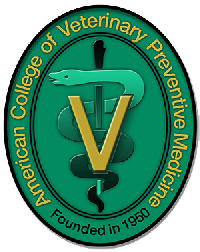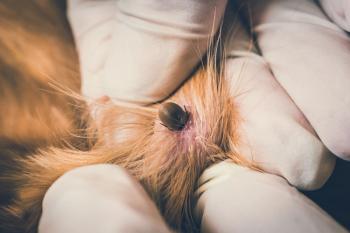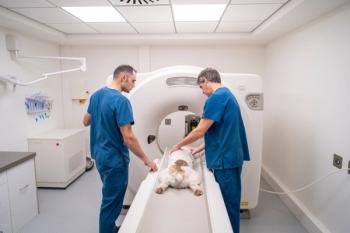
Risk, revolution, and preventive medicine

How preventive medicine has evolved over time
All dogs are the same, roughly, right? All cats are just small dogs, right? Wrong! Of course, every veterinarian understands that each patient is special to their owner and unique as a living organism, but do individual patients need truly individualized care? Furthermore, is the veterinary medical profession at a point where truly individualized patient care is even available? Let’s start at the beginning.
Prevention as an approach to medicine and health care is not new, however, preventive medicine has certainly evolved with the times. Despite a basic recognition of disease prevention by Hippocrates in the fifth century BCE, preventive medicine was largely ignored all through the Middle Ages and leprosy and plague abounded. From the first sanitary act in England in 1388 to the first efforts at quarantine and isolation in the 1500s, prevention has always cost a mere fraction of a cure. Indeed, as our understanding of disease and pathology expanded through the seventeenth and eighteenth centuries, the introduction of mortality statistics and population trends and the invention of vaccines in 17981, prevention of disease has been as coveted as the cure. In 1902, Thomas Fuller wrote in Practical Spelling: A Text Book For Use in Commercial Schools, “He who cures a disease may be the skillfullest, but he who prevents it is the safest physician.” Fast forward to modern-day medicine and public health measures are almost exclusively focused on prevention of disease.
The progression of veterinary medicine and the integration of preventive measures runs nearly parallel to human medicine. Unfortunately, the concept of One Health and its application in disease prevention would not be formally recognized until much later, but I digress. Truly the cornerstone to preventive medicine in the veterinary field has traditionally been vaccination, nutrition and husbandry. These 3 continue to be critical in the prevention of such life-threatening diseases as rabies, distemper, parasitism, nutritional hyperparathyroidism, etc. As veterinary medicine has evolved, so, too has the recognition of the importance of a healthy microbiome in the long-term health of most creatures. In fact, with 70 to 80% of immune cells being present in gastrointestinal tissue2, the gut microbiome has taken on a near mythical importance in the health of animals. Transfaunation procedures to help restore the normal microbial flora in the gut are more commonplace than ever before. Additionally, the avoidance of oral antibiotics to avoid unnecessary disturbance of the gut microbiome is more commonplace than one might think in veterinary clinics. And speaking of oral issues, molecular analysis can be used to identify feline chronic gingivostomatitis and periodontal disease based on changes in the oral microbiota.3
Gastrointestinal and oral microbiota are not the only focus of the ongoing revolution in the field of prevention in veterinary medicine. Just as human medicine is exploring the application of genetic analysis, veterinary medicine can now leverage genetic testing to impact current medical and husbandry decisions. Genetic analysis seems to have started with a “name-that-breed” approach wherein pet owners could submit samples to determine pure bred status of their pet or specific breeds contained within a dog of unknown origin. While the novelty of such testing is appealing, little medically applicable information is likely gleaned from such superficial analysis. The decision matrix for whether or not to perform a diagnostic test is fairly simple in my opinion: Will the test result change anything? The answer to that question regarding genetic analysis is evolving. Recent developments in canine genetic analysis testing do allow for medical intervention and disease prevention.4,5 Two commercially-available canine genetic test panels provide results for more than 200 different health-related issues from joint dysplasia to nasal pigment loss to urolith formation.
Genetic testing and recognition of point mutations and their impact on overall health may allow for the most individualized veterinary medical approach to care to date. For example, if a kitten is determined to possess a point mutation associated with renal disease, the attending clinician can make recommendations to the owners to feed a low-protein diet as early as 6 months of age. Additionally, more intensive monitoring of urinary output and specific gravity earlier than traditional recommendations of 7 years or older would be appropriate and allow for earlier recognition of renal compromise followed by more effective intervention. The conversation regarding avoiding the feeding of table scraps to a Maltese puppy takes a more serious and significant tone if the puppy is determined to be genetically predisposed to pancreatitis. Currently, several complex diseases are correlated with specific canine genetic markers: hip dysplasia, granulomatous colitis (GC) and idiopathic epilepsy.6
Another lesser-known area of research is individual sensitivity to different pharmaceutical products. Point mutations can indicate a propensity for pharmacological sensitivity allowing veterinarians to move beyond the old adage “White on feet, don’t treat” and make informed decision on individual patient sensitivities. Imagine being able to predict gastrointestinal upset associated with doxycycline administration? Certainly, if a patient has a propensity toward sensitivity to the only effective antimicrobial available for their clinical condition, clinicians should not withhold treatment. Rather treatment should be initiated along with mitigating ancillary care such as antihistamines and even probiotics to support that ever-important microbial flora. While genetic testing and understanding of the ever-enlarging role of the gut microbiome are surely driving a revolution in preventive veterinary medicine, neither exists in a vacuum and both emphasize the importance a holistic approach to the veterinary patient.
Genetically based preventive care may seem like Star-Trek stuff to most practitioners (and it kind of is), but there is no reason that veterinarians should fear the future or avoid integration of all available tools into treatment regimes. However, talking with geneticists can be intimidating. The universe of genetic medicine naturally has its own vocabulary. So, what are the most common, yet important, terms to know and why? A critical term to understand is “penetrance.” Penetrance is the likelihood that a clinical condition will occur when a particular gene or mutation is present.7 For example, if a shih-tzu has SLC2A9 (Exon) – chr3 mutation8 present and that mutation has an 80% penetrance and is linked to urolith development, then that dog is almost for sure to develop uroliths in its lifetime vs if the mutation only has a 5% penetrance. Another term of art when discussing genetic testing for prevention is “linkage.” Linkage is tendency for genes or DNA segments that are close to each other on the chromosome to be inherited together.9 Such tendencies are important when relying on “linkage analysis.” Linkage analysis is a technique used to infer the presence of a disease-causing gene by identifying other genetic markers that are known to be near the target gene and are typically co-inherited. It is basically the genetic analysis equivalent of being guilty by association. Dogs that are positive via linkage analysis are a bit trickier to interpret. For example, if a corgi is positive for the FGF4-chr12-chr12 gene, the dog may not be more likely than any other corgi to develop intervertebral disc disease (IVDD), experience an IVDD event, or require surgical intervention for IVDD. However, if the corgi has multiple copies of this mutation, the dog is approximately 46 times more likely to have an IVDD event10 and approximately 5 to 15 times more likely to require surgical intervention11 for an IVDD event than a corgi without the mutation. Such hard statistics and professional lingo are sure to encourage more chondrodystrophic breed lovers to purchase at least one more set of stairs for their beloved pups, right?
While preventive veterinary medicine may not be the newest clinical approach, it has surely stood the test of time better than any other. With the evolving understanding of the importance of the gut microbiome in the immune response and the break-neck pace of genetic discoveries, preventive veterinary medicine is definitely cool again. So, let’s put down our firehose long enough to start looking to prevent clinical fires rather than simply arriving on scene in time to put them out.
References:
- Preventive medicine. Encyclopædia Britannica, Inc. Accessed August 11, 2022.
https://www.britannica.com/science/preventive-medicine - Wiertsema SP, van Bergenhenegouwen J, Garssen J, Knippels LMJ. The Interplay between the Gut Microbiome and the Immune System in the Context of Infectious Diseases throughout Life and the Role of Nutrition in Optimizing Treatment Strategies. Nutrients. 2021;13(3):886. Published 2021 Mar 9. doi:10.3390/nu13030886
- Dolieslager SM, Riggio MP, Lennon A, et al. Identification of bacteria associated with feline chronic gingivostomatitis using culture-dependent and culture-independent methods. Vet Microbiol. 2011;148(1):93-98. doi:10.1016/j.vetmic.2010.08.002
- Leeb T, Müller EJ, Roosje P, Welle M. Genetic testing in veterinary dermatology. Vet Dermatol. 2017;28(1):4-e1. doi:10.1111/vde.12309
- Rokhsar JL, Canino J, Raj K, Yuhnke S, Slutsky J, Giger U. Web resource on available DNA variant tests for hereditary diseases and genetic predispositions in dogs and cats: An Update. Hum Genet. 2021;140(11):1505-1515. doi:10.1007/s00439-021-02256-5
- Hayward JJ, Castelhano MG, Oliveira KC, et al. Complex disease and phenotype mapping in the domestic dog. Nat Commun. 2016;7:10460. Published 2016 Jan 22. doi:10.1038/ncomms10460
- NCI Dictionary of Genetics Terms. National Cancer Institute. Accessed August 11, 2022.
https://www.cancer.gov/publications/dictionaries/genetics-dictionary/expand/P - Donner J, Kaukonen M, Anderson H, et al. Genetic Panel Screening of Nearly 100 Mutations Reveals New Insights into the Breed Distribution of Risk Variants for Canine Hereditary Disorders. PLoS One. 2016;11(8):e0161005. Published 2016 Aug 15. doi:10.1371/journal.pone.0161005
- NCI Dictionary of Genetics Terms. National Cancer Institute. Accessed August 11, 2022. https://www.cancer.gov/publications/dictionaries/genetics-dictionary/expand/L
- Brown EA, Dickinson PJ, Mansour T, et al. FGF4 retrogene on CFA12 is responsible for chondrodystrophy and intervertebral disc disease in dogs. Proc Natl Acad Sci U S A. 2017;114(43):11476-11481. doi:10.1073/pnas.1709082114
- Batcher K, Dickinson P, Giuffrida M, et al. Phenotypic Effects of FGF4 Retrogenes on Intervertebral Disc Disease in Dogs. Genes (Basel). 2019;10(6):435. Published 2019 Jun 7. doi:10.3390/genes10060435
Newsletter
From exam room tips to practice management insights, get trusted veterinary news delivered straight to your inbox—subscribe to dvm360.




